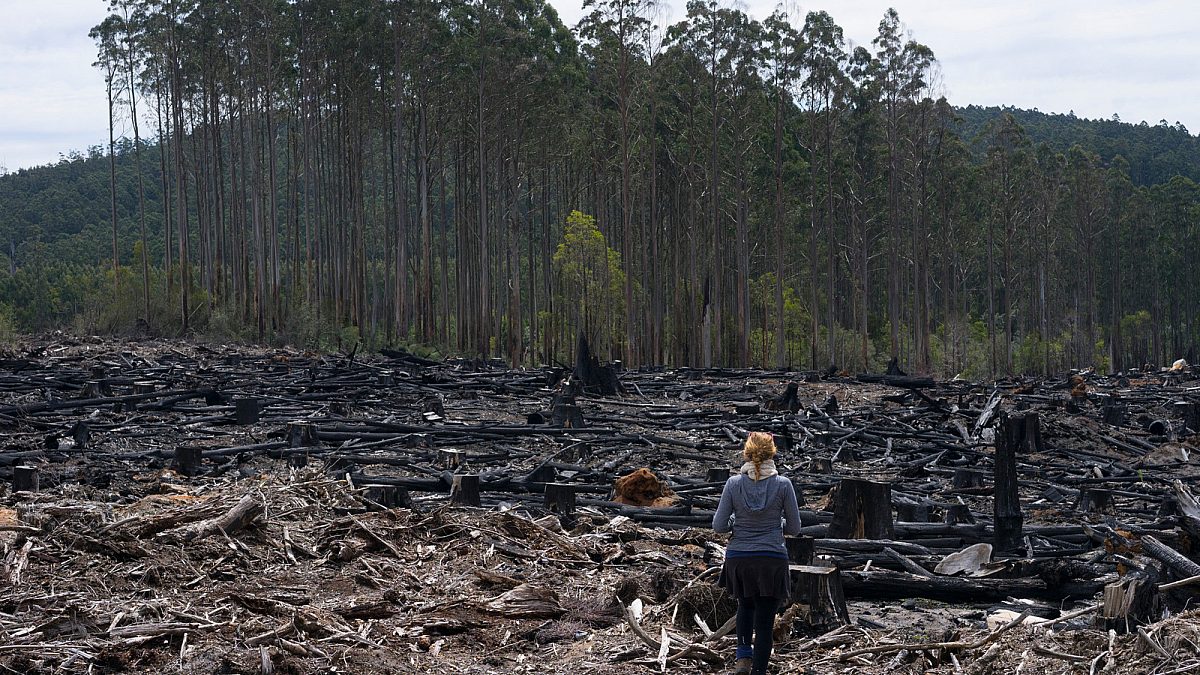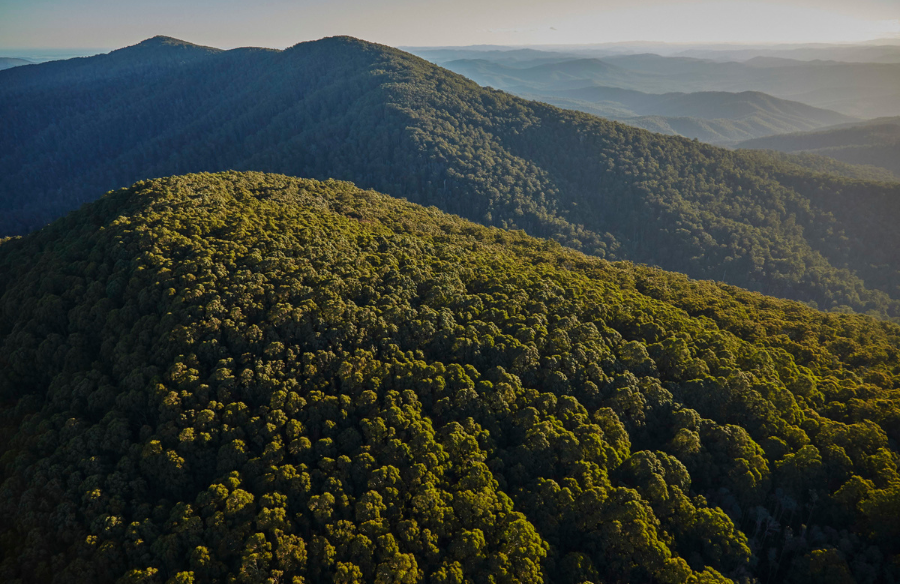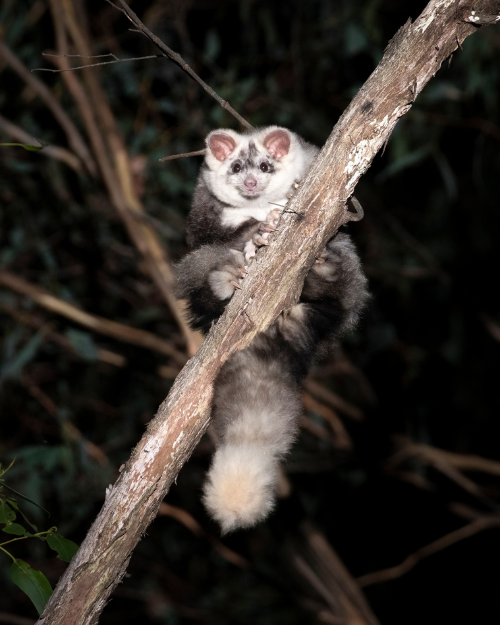
Victoria State Election 2022—value and protect Victoria’s tall forests
The next Victorian parliament must value and protect Victoria’s forests and bushland.
These tall forests are still being logged and pulped for low value products, such as cardboard boxes.
Wilderness Society calls on all candidates and parties to support the following actions:

Halt logging in pockets of unburnt forest that survived the 2019-20 bushfires, providing habitat refuges during forest and wildlife recovery.
Protect habitat to threatened species impacted by logging such as Leadbeater’s Possum, Greater Glider, Powerful and Sooty Owls, Smoky Mouse, Glossy Black-Cockatoo, Large Brown Tree Frog, Giant Burrowing Frog and Barred Galaxias (fish).
Support creation of the Great Forest National Park including investment in nature-based tourism infrastructure as a world class destination on Melbourne’s doorstep; sustainable job opportunities compatible with forests and the environment.
Support the Emerald Link in East Gippsland, including diversification of jobs and business opportunities in the region, particularly through increased government investment in nature-based tourism infrastructure. Continue to develop and invest in the Sea to Summit hiking and recreation trail, and support the Valley of the Giants walk proposal.
Complete the transition of Nippon / Opal out of pulping native forests well before 2030. This involves an urgent shift to plantation and recycled fibre, with government support for plantation transport costs during transition, encouragement for domestic use of plantation wood over export and repeal of the Wood Pulp Agreement Act.
Wood volumes from native forests rapidly reduced industry wide (bring forward planned reductions from 2024, and cessation before 2030).
Rapid establishment of plantations in the LaTrobe valley / Gippsland, including continued government funding support.
Further government support for diversification of regional economies through the transition, including in innovation for plantation and recycled sectors.
Recognise First Nations rights and interests as Custodians of the forests, land and water—including proper agreement making and consent on these forest matters.

Victoria's forests are internationally significant, home to rare and threatened species such as the iconic wollert / Leadbeater’s possum and poong-goong / greater glider. They provide clean air and water to Victorian communities, form an important carbon sink and are vital to First Nations who have long connection and continuing Custodianship of the lands and waters.
Logging is known to impact a variety of threatened species,1 water quality2 and quantity3, 4 and carbon stores.5
Around 90% of the wood taken from the forests is wood chipped and pulped6,7 to manufacture commodities such as paper, cardboard and packaging.8
Each year, hundreds of thousands of tonnes of logs from public forests are pulped by Nippon / Opal at a facility at Maryvale in Gippsland. A longstanding supply contract with the Victorian government, legislated under the Wood Pulp Agreement Act,9 sets minimum supply volumes.
The logging and pulping of forests is economically subsidised by the community. VicForests, the agency selling logs from public forests—has only made financial returns five years in the 16 of its existence,10 with multi-million dollar losses in the two years to 2021 despite government grants.11 While indirect subsidies are not accounted for—such as the loss of clean water from catchments and impacts on nature-based tourism.12, 13, 14
In 2019, the Victorian Labor government began a process of transitioning logging out of public forests by 203015. Completion of the transition of Nippon Opal’s pulping operations must be brought well forward, particularly given the subsequent 2019-20 bushfires’ catastrophic impacts on forests and wildlife,16, 17 making them even more vulnerable.
Looking to the future, the Great Forest National Park and Emerald Link initiatives offer an alternative vision: a celebration and appreciation of the value of these forests that supports community and business opportunities for economic and social gains for everybody.- Threatened species and communities risk assessment tranch 1 (Oct 2020) and tranche 2 (Sept 2022). Victorian department of Land, Water and Planning.
- Croke J, Wallbrink P, Fogarty P, Hairsine P, Mockler S, McCormack B, Brophy J (1999) Managing sediment sources and
movement in forests: The forest industry and water quality. Cooperative Research Centre for Catchment Hydrology. Industry report 99/1 - Kuczera G (1985) Prediction of water yield reductions following a bushfire in ash - mixed species eucalypt forest.
Melbourne and Metropolitan Board of Works. - O'Shaughnessy P and Jayasuriya M (1991) Water supply catchment hydrology research - status report 1991. Melbourne
Water. - Keith H, Lindenmayer D, Mackey B, Blair D, Carter L, McBurney L, Okada S, Konishi-Nagano T (2014) Managing temperate forests for carbon storage: impacts of logging versus forest protection on carbon stocks. Ecosphere 5:art75
- Schirmer J, Mylek M, Morison J (2013) Socio-economic characteristics of Victoria’s forestry industries. Study commissioned by the Victorian Department of Primary Industries.
- Leadbeater’s Possum Advisory Group (2014) Technical Report.
- Ibid
- Forests (Wood Pulp Agreement) Act 1996.
- Analysis of VicForests Annual reports 2007-2021; 2006; 2005
- Logging agency blames lawsuits after losing $4m despite state grants. The Age 23 Nov 2021.
- Melbourne loses 15bn litres of water annually from logging catchment, study finds. The Guardian 23 Aug 2019.
- Logging must stop in Melbourne’s biggest water supply catchment. The Conversation 16th Nov 2018.
- Keith et al (2017) Experimental Ecosystem Accounts for the Central Highlands of Victoria. Final Report. Summary.
- Department of Jobs, Precincts and Regions. Victorian Forestry Plan. Webpage accessed Oct 2022.
- Department of Environment, Land, Water and Planning (2020) Victoria’s bushfire emergency: biodiversity response and recovery. Version 2 Aug 2020.
- Department of Environment, Land, Water and Planning (2022) Biodiversity response and recovery supplementary report: bushfire impact on species in Victoria. Aug 2022.
Authorised by: R Hughes, Wilderness Society Victoria, 353-355 King St, West Melbourne